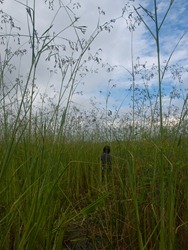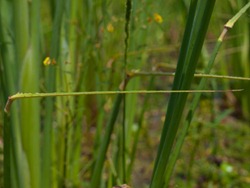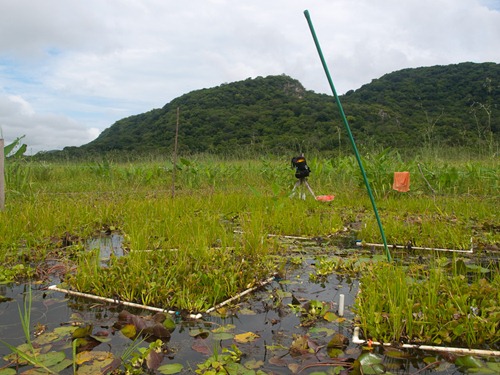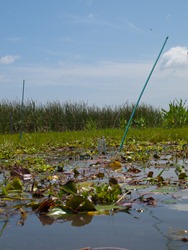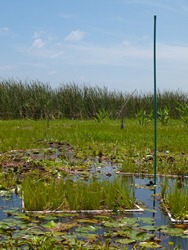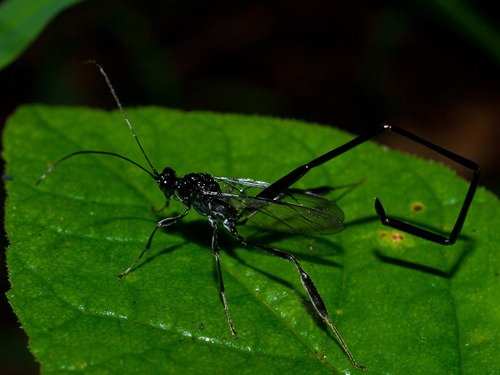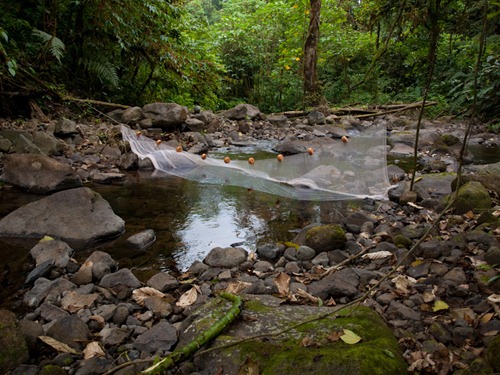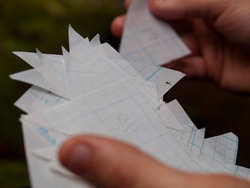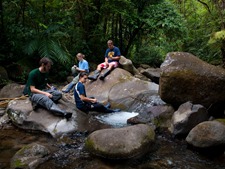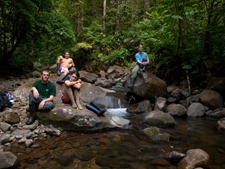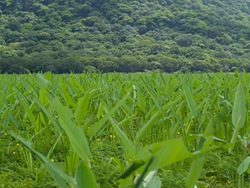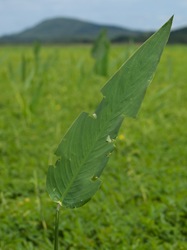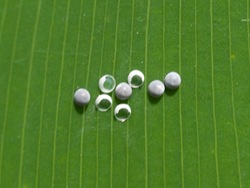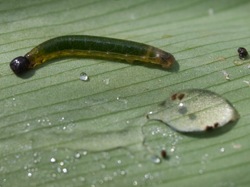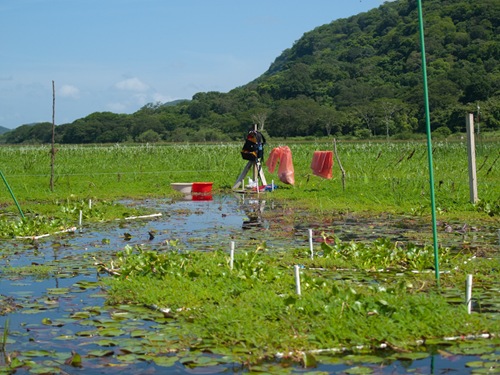One of my first and most popular posts is the Collembolan orgy. I get hits from it nearly every day… you know, people searching for the word ‘orgy’. Well, with a second post entitled so, Google will hopefully up Montegraphia’s rank for the keyword… I’ll get even more curious folks.
Anyway, I collected a few of these guys for Dr. Foote. They seem to be everywhere in the wetland, but something about this Nymphea flower caused them to react a bit differently. Are they pollen eaters?
Another thing; How do I sweep for flies in a wetland? When the net gets wet, it is extremely difficult to pull flies out into the kill jar.
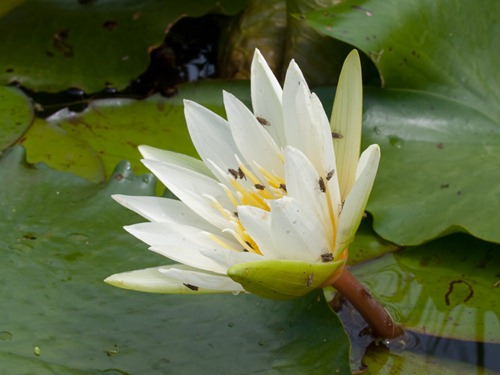 |
|
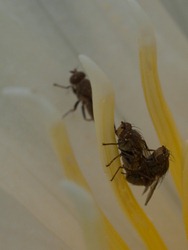 |
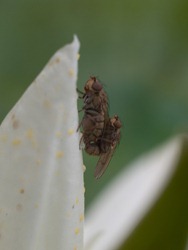 |

